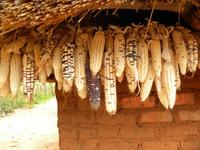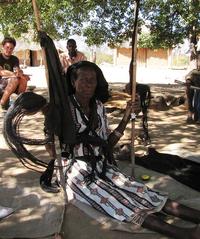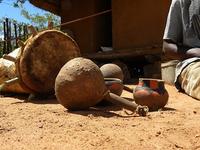Arthur Perrotton
Last update: 8 August 2012
Summary
In the context of global warming and climate change, increased aridity and rainfall variability are expected all over Southern Africa. This project considers Hwange NP and it’s periphery as a socio-ecological system that includes wildlife, plants, domestic animal and human, and where there are flows and exchanges of natural resources between these components (such as water, wood, fruits, meat, diseases…). The purpose of the SAVARID project is to understand how this system can change and adapt in the context of climate change. To achieve this objective, researchers will study all the components (wildlife, plants, livestock, human…) to understand how they will adapt to climate change.
During the course of his Master degree in anthropology, the student will be focused on the human component of the system. Southern Africa’s climate is known for its high level of rainfall variability. On the other hand, a large proportion of households’ livelihoods are based on rain fed agriculture. Zimbabwe’s Natural regions IV and V probably among the most critical areas in term of water availability for human activities (crops production, livestock husbandry…). According to climate predictions, aridity and rainfall variability will increase, and that will have consequences on peoples’ livelihoods and practices. It is therefore necessary to document the local perception regarding climate in and of its impact on land use and food production.
This study will address the research questions such as:
- Are they any natural indicators that people use to define the climate variability?
- In villages with people having different origins, do these people share the same traditional knowledge and environmental indicators?
- Are those indicators related to geographical or ethno-linguistic origins or social status?
- What are the dynamics of knowledge transfer? Is it widely shared or not? Is it still used by new generations?
- Are practices influenced by traditional knowledge (e.g. agricultural practices)?
- Is this knowledge used to adapt or cope with climate variability?
In order to provide answers to these questions, the first part of the study will focus on establishing seasonal and agronomic calendar. The student will try to gather all the traditional knowledge and indicators (natural or not) used to define seasons, and associated food production activities. A particular attention will be put on understanding the dynamics of that knowledge, within the village, whether through generations, between households or between different groups. The use of that knowledge will also be studied in order to understand how and by whom this knowledge are used.
The second part of the study will consist in retrospectives discussions and interviews, to understand, according to villagers’ point of view, the climatic history of the area. The student will document the long term climate variability perception from villagers. This will lead the discussion toward perceptions of impacts of this variability (droughts…), and identify coping strategies.
Last update: 8 August 2012



